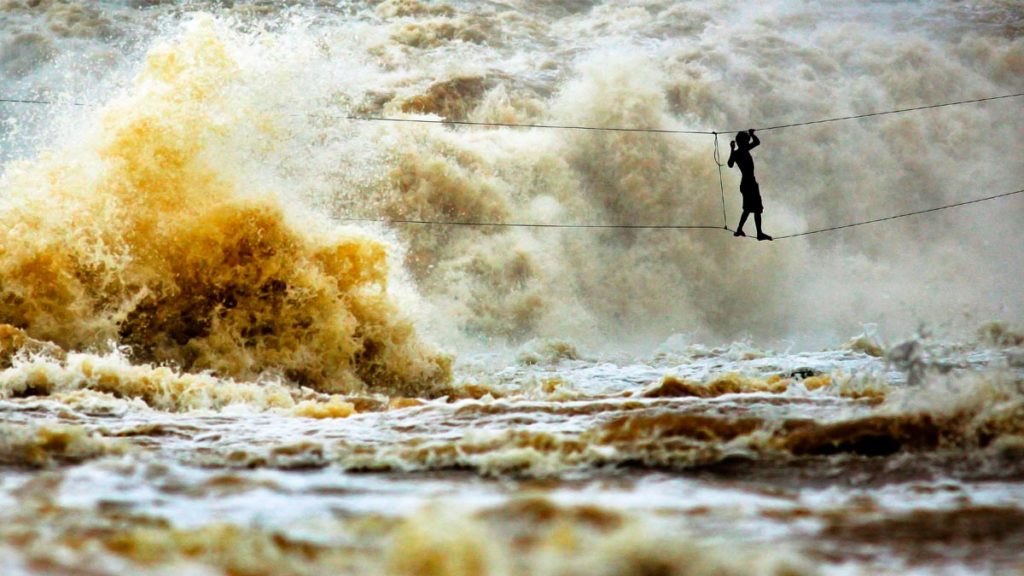“The risks of being out of the game are huge compared to the risks of being in it.”
– Warren Buffett 2012 Annual Letter to Shareholders
“Many a bad move has been made by standing still.”
– Chinese fortune cookie
When you invest, you place your trust in others. You trust that the electric utility will honor those bond payments. You trust that the company whose stock you just bought will not be mismanaged and will grow and be more profitable than it is today. You trust that the person you rent your apartment to, the one you just bought with a hefty mortgage, will pay the rent and take good care of the property.
What many people don’t realize is that no matter where you keep your money, you are investing, because you are placing your trust in others.
This is true even if you keep your money in cash: you are trusting that your government will keep honoring that colored piece of paper and that it will retain its purchasing power. Granted, the former has a very high probability – especially in the developed world; but the probability of the latter is extremely low because of inflation. Let’s just say that you are more likely to get struck by lightning than to preserve your purchasing power by hoarding cash.
The same is true of gold, silver, diamonds or any other metal or rock that people think are valuable or a “store of wealth.” In all of these cases, you are trusting that others will keep seeing value in these inanimate objects that produce no cash and pay no interest. Even high-grade bonds that do pay interest require trust. Not only that the payer will remain solvent, but that the interest will be enough to offset inflation. When the income is fixed, so too is your upside. It’s no wonder Benjamin Graham called bond investing “a negative art.”
What distinguishes the different options of where you can keep your money is risk – the probability of losing part or all of that hard-earned money. But risk is only one side of the coin. The other is reward. The risk side of the coin often weighs heavier on the psyche. Risk is a word that immediately elicits a feeling of fear and caution. Reward is typically in the distance, and often beyond the horizon of reality. Risk is immediate, and most avoid going down that road.
What many don’t realize is that they are already on that road, and that everywhere they turn, there are new risks to contemplate. Staying put is not risk-free either, because things will constantly be coming in your direction. My favorite line of one of my favorite books is a simple one: “Living is very dangerous.” (Grande Sertão Veredas, by Brazilian author João Guimarães Rosa). It is a poignant reminder that life is a constant balancing act over an abyss that we have to come to terms with.
The litany of fears is endless, but we learn to live with risk, right? And more importantly, we take risks in order to live. We get in a car or an airplane in order to travel to that dream vacation in the Caribbean. We buy the dream house with a hefty mortgage even though there is no guarantee that we will be well-employed in the coming year, much less ten years from now.
If you want to have big rewards along your journey, you will need to face the risks of the paths that lead to those rewards. If you want to go to the Caribbean, you will need to board a boat or an airplane. If you are not willing, because you think they are too risky, then sorry – no Caribbean vacation for you.
Back to investing, there is no doubt that buying stocks carries risk. Stock markets can be volatile, and even the best stocks have been known to crash. But just like airplane manufacturers have learned over time to reduce the risks of catastrophic inflight failures, it is also possible to reduce the risk of crashing in investing. Great investors do that by researching and learning about the companies to whom they entrust their money.
The longer a company has been around, the more data one is able to gather, so if you think risk management is a good idea, older companies have a natural advantage over start-ups. But age is not a reflection of quality. You want companies with proven track records, whose management and culture have been battle-tested. Have they been able to grow the company and its profits through good and bad times? You want companies that make products or render services that are not only in demand today, but whose offerings will transcend cycles and the fads that they invariably inspire.
Finding these companies is not easy – in fact, it can take hundreds, even thousands of hours of work to truly understand just one company. But that’s where the other side of the coin kicks in: reward. Because once you do find such a company, it will reward you for years or decades to come. The work will have paid off, and the reward will come with less risk.
This is how real investors think. They know reward comes with risk, but they seek to make the reward side of the coin heavier by confronting risk with knowledge instead of merely avoiding it.
Let the reward weigh on you, not the risk.










